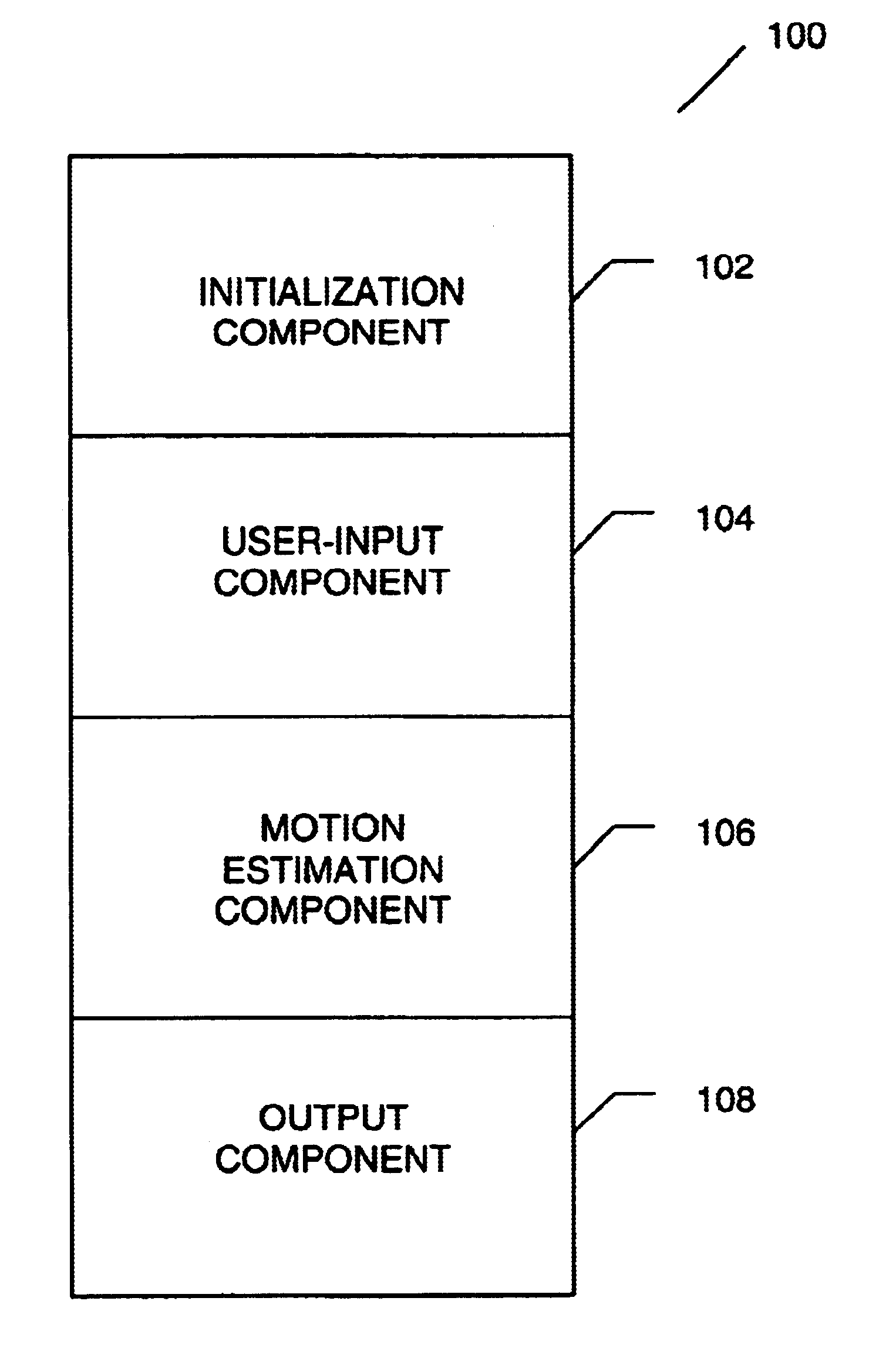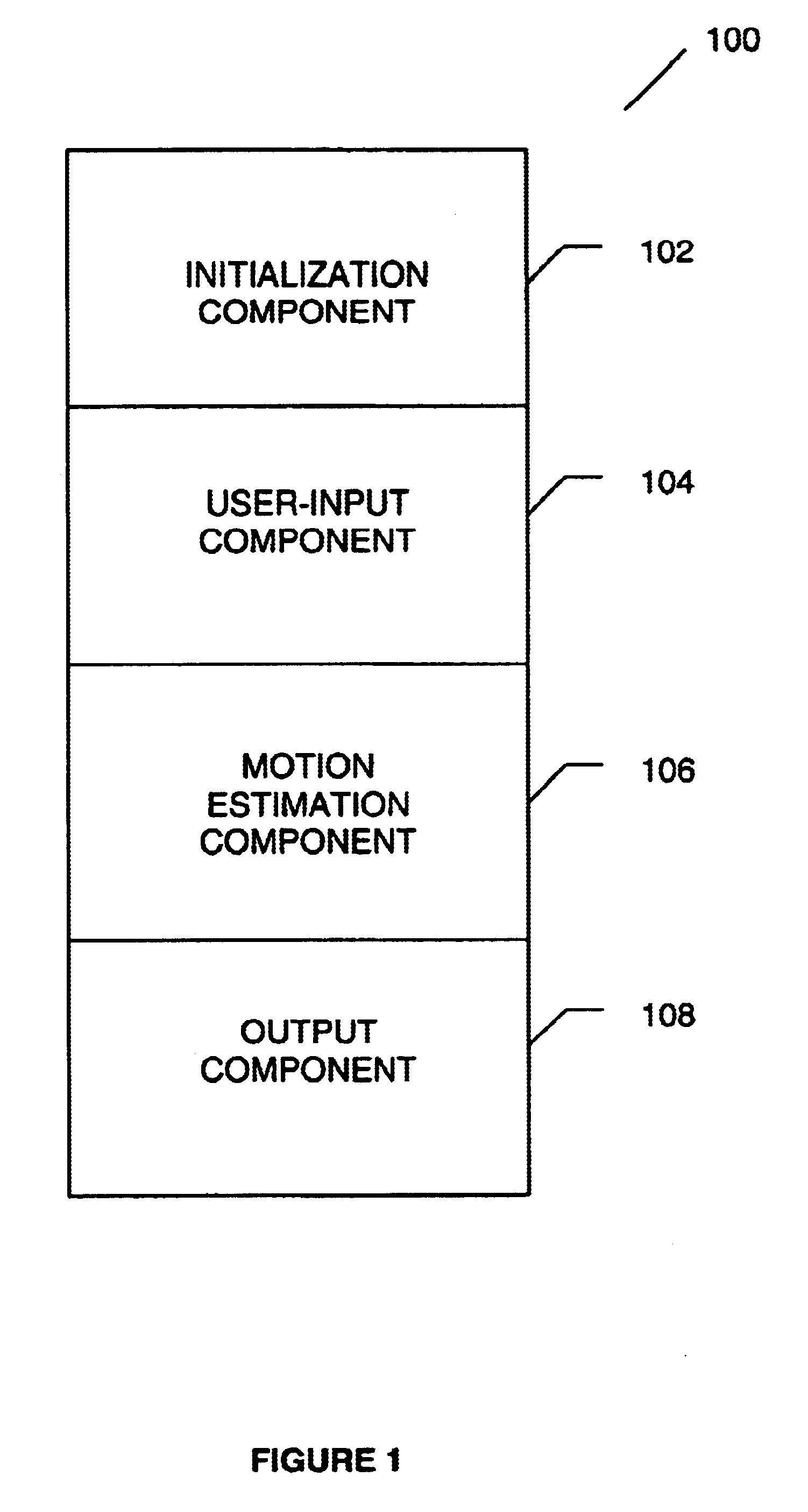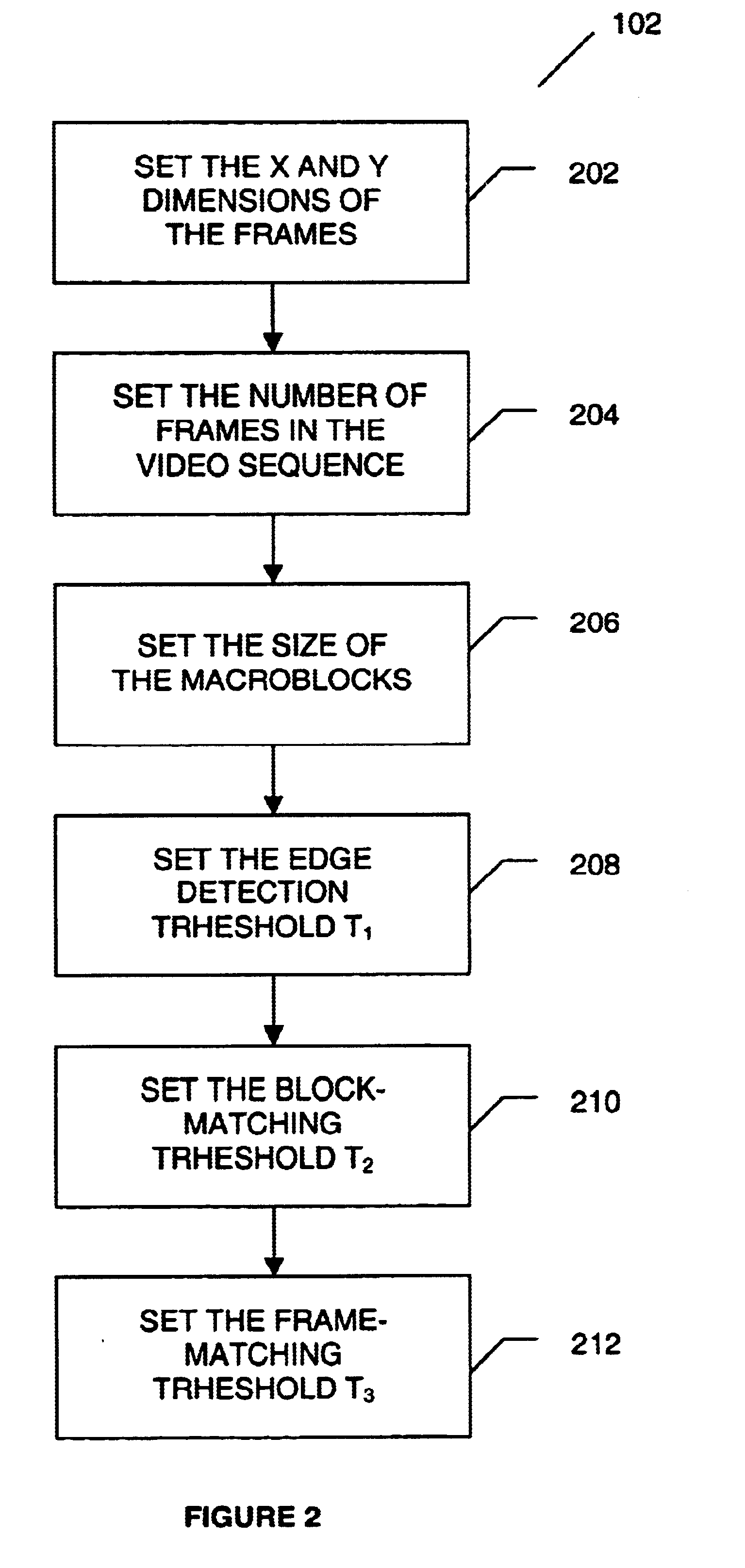Systems and methods for tracking objects in video sequences
a technology of object tracking and video sequence, applied in the field of system and method for object tracking in video sequence, can solve the problems of large transmission bandwidth and storage requirements, difficulty in computer-based object tracking, and time-consuming tasks, and achieve the effect of reducing computational overhead
- Summary
- Abstract
- Description
- Claims
- Application Information
AI Technical Summary
Benefits of technology
Problems solved by technology
Method used
Image
Examples
Embodiment Construction
[0033]Reference will now be made in detail to preferred embodiments of the invention, non-limiting examples of which are illustrated in the accompanying drawings. Wherever possible, the same reference will be used throughout the detailed description to refer to the same or like parts.
[0034]The present invention relates to methods and systems for tracking one or more objects in a video sequence. The systems and methods for tracking objects in video sequences are useful in many applications. For instance, they are useful when indexing or accessing video and are especially useful when the indexing or accessing need to occur in real-time or in a short period of time. The video sequence may contain synthetic images created through a computer graphics application, or real-life images captured by a camera. The systems and methods may advantageously be used with other systems or methods. For instance, the systems and methods for tracking objects may form part of a larger network for distrib...
PUM
 Login to View More
Login to View More Abstract
Description
Claims
Application Information
 Login to View More
Login to View More - R&D
- Intellectual Property
- Life Sciences
- Materials
- Tech Scout
- Unparalleled Data Quality
- Higher Quality Content
- 60% Fewer Hallucinations
Browse by: Latest US Patents, China's latest patents, Technical Efficacy Thesaurus, Application Domain, Technology Topic, Popular Technical Reports.
© 2025 PatSnap. All rights reserved.Legal|Privacy policy|Modern Slavery Act Transparency Statement|Sitemap|About US| Contact US: help@patsnap.com



